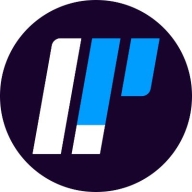


Logpoint and WatchGuard Firebox compete in the security software market. WatchGuard Firebox seems to have the upper hand due to its strong integration capabilities and versatile deployment options.
Features: Logpoint is known for its cost-effective logging, quick setup, flexible search, and analytics capabilities. It integrates AI and machine learning to boost security monitoring and offers a user-friendly interface with strong support. WatchGuard Firebox excels in integrating with Active Directory and VPN features. It provides a straightforward setup, robust tech support, and offers layered security with strong threat detection and reporting capabilities.
Room for Improvement: Logpoint struggles with complex log handling, has limited third-party integrations, and demands high resources. It's not cloud-native and could improve by enhancing third-party integration, interface options, and reporting. WatchGuard Firebox could improve usability, reporting, simplify management, and better integrate third-party apps. Customers request a simpler VPN setup and more interactive help resources.
Ease of Deployment and Customer Service: Logpoint is mainly on-premises with some hybrid options. Customer service is inconsistent, and while responsive, technical support can lack depth. WatchGuard Firebox offers deployment flexibility with on-premises, cloud, and hybrid options. Although technical support is comprehensive, customer service has issues with slow response times for critical issues.
Pricing and ROI: Logpoint's device-based pricing is straightforward and seen as cost-effective, although it can become expensive without discounts. It provides good ROI with predictable costs. WatchGuard Firebox's competitive pricing is favorable for SMBs, offering bundled services that add value. While both offer good ROI, WatchGuard's initial and renewal costs are slightly higher.
Clients are now comfortable and not wasting productive hours on IT support.
The automation part is giving us a cost benefit and speed; we can react faster.
It's a very useful tool to mitigate and protect your enterprise.
They offer very accurate solutions.
The quick resolution of issues with Fortinet FortiGate is due to the support of the company and the fact that the equipment is easy to work with.
I would rate the technical support for Fortinet FortiGate a ten out of ten.
Logpoint's customer support is not sufficient with only one engineer in the US.
The technical support for Logpoint is very good, and I would rate it as nine out of ten.
On a scale of one to 10, I would rate the technical support of the WatchGuard Firebox a 10.
The technical support is good.
They scale up really well from smaller models like the FortiGate 40 and 50 to bigger sites with the FortiGate 100 for more throughput - up to enterprise datacenters.
The variation comes in terms of the interfaces and throughputs, but from a security perspective, you get the same benefit, irrespective of whether you have an entry-level unit or an enterprise.
We determine sizing based on multiple factors: number of users, available links, traffic types, server count, services in use, and whether services will be published.
It is web-based and accommodates the expansion of our organization.
Logpoint is scalable and capable of expanding.
If we're going for more concurrent users, we need to change the entire box.
I find the WatchGuard Firebox scalable, as it's easy to change configurations from this product to another one.
We're experiencing 99.999% availability consistently.
I would rate the stability of Fortinet FortiGate a ten out of ten.
Currently, we are experiencing a general outage of one of the main internet service providers of the Dominican Republic, and we have not been impacted in our operations because with SD-WAN, we have another internet service provider and we are working with the second WAN connection without any disruption.
I have received reports indicating glitches and downtimes with Logpoint.
Investing in a solution that can accommodate such growth would be more cost-effective than repeatedly purchasing new hardware.
While Fortinet claims to offer a comprehensive network solution, it falls short in addressing computer application issues, particularly server security.
When considering Sophos XG, which we also use, the logging and reporting functionality is notably more efficient.
Dealing with foreign entities for support was a challenge, leading us to switch providers due to lack of adequate support.
Logpoint needs to be cloud-native, as currently, it is not.
The cost for renewal after three years is 75% of the hardware cost, which is a significant problem.
When implementing a rule using a group of IPs, it is not possible to do that directly.
The WatchGuard Firebox has certain features, but the challenge is that we have some clients who don't have a network or are only mobile users, which leads us to think the future is in SASE products, not in the WatchGuard Firebox.
Last year, I renewed the support for three years, which can sometimes be expensive but depends on the security benefits and how it helps us.
It offers cost savings as it is generally cheaper than the competition.
It is about 20% cheaper.
I rate the pricing at eight, suggesting it's relatively good or affordable.
When we tried to renew the Palo Alto license, the cost was beyond any reasonable range.
It's expensive us here.
I have faced challenges with the WatchGuard Firebox regarding price since we work with customers who use the Stormshield product, which is less expensive and French-made.
In terms of security, we have not experienced any security flaws or loopholes, and it has proven to be quite stable.
FortiGate has helped reduce the risk of cyberattacks that might disrupt our client's production.
These features help reduce our downtime, manage the ISPs, and deploy SLAs for all the website traffic.
The UEBA enables us to monitor at the device level, and SOAR provides playbooks and templates that we can modify and incorporate into the platform.
It effectively facilitates logging and log storage and assists in security event management by ingesting security events.
The Firebox offers valuable features such as network security, URL filtering, UTM features, intrusion prevention and detection, and authentication.
Basically, we have received a good return on investment.
I utilize AI within the WatchGuard Firebox, as we use the interconnection with threat syncs, and AI is implemented.



| Company Size | Count |
|---|---|
| Small Business | 350 |
| Midsize Enterprise | 130 |
| Large Enterprise | 187 |
| Company Size | Count |
|---|---|
| Small Business | 17 |
| Midsize Enterprise | 3 |
| Large Enterprise | 4 |
| Company Size | Count |
|---|---|
| Small Business | 91 |
| Midsize Enterprise | 25 |
| Large Enterprise | 15 |
Fortinet FortiGate excels in providing integrated VPN, firewalling, and Unified Threat Management (UTM) with centralized management and high availability. It supports remote access and comprehensive threat protection, making it a preferred choice for securing networks.
Fortinet FortiGate offers a robust security platform with features such as strong intrusion prevention, application control, and web filtering. Its integration with Active Directory and SD-WAN functionality provides scalable solutions for large networks. Users appreciate its ease of use through centralized management interfaces, ensuring robust security with flexible configurations. However, FortiGate could enhance its graphical interface and technical support responsiveness, address firmware bugs and costly licensing, improve logging, integrate better with third-party tools, and strengthen scalability and memory for log storage. Complexity in configuration and the need for intuitive features are noted challenges, and there's a demand for advanced security, zero-trust capabilities, and AI integration.
What are the key features of Fortinet FortiGate?Fortinet FortiGate is widely implemented across industries like education, finance, and government. Companies use it for firewall protection, VPN, and SD-WAN capabilities, ensuring secure perimeter and data center security. It facilitates remote access management and traffic routing optimization, offering reliable security and connectivity solutions.
Logpoint is a cutting-edge security information and event management (SIEM) solution that is designed to be intuitive and flexible enough to be used by an array of different businesses. It is capable of expanding according to its users' needs.
Benefits of Logpoint
Some of the benefits of using Logpoint include:
Reviews from Real Users
Logpoint is a security and management solution that stands out among its competitors for a number of reasons. Two major ones are its data gathering and artificial intelligence (AI) capabilities. Logpoint enables users to not only gather the data, but also to maximize both the amount of data that can be gathered and its usefulness. It removes many of the challenges that users may face in data collection. The solution allows users to set rules for collection and then it pulls information from sources that meet the rules that have been set. This data is then broken into manageable segments and ordered. Users can then analyze these ordered segments with ease. Additionally, LogPoint utilizes both machine learning and AI technology. Users gain the ability to protect themselves from and if necessary resolve emerging threats as soon as they arise. The AI sets security parameters for a user’s system. These act as a baseline that are triggered and notify the user if anything deviates from the rules that it set up.
The chief infrastructure & security officer at a financial services firm writes, “It is a very comprehensive solution for gathering data. It has got a lot of capabilities for collecting logs from different systems. Logs are notoriously difficult to collect because they come in all formats. Logpoint has a very sophisticated mechanism for you to be able to connect to or listen to a system, get the data, and parse it. Logs come in text formats that are not easily parsed because all logs are not the same, but with Logpoint, you can define a policy for collecting the data. You can create a parser very quickly to get the logs into a structured mechanism so that you can analyze them.”
A. Secca., a Cyber Security Analyst at a transportation company, writes, “It is an AI technology because it is using machine learning technology. So far, there is nothing better out there for UEBA in terms of monitoring endpoints and user activity. It is using machine learning language, so it is right at the top. It provides that capability and monitors all of the user’s activities. It devises a baseline and monitors if there is any deviation from the baseline.”
WatchGuard Firebox is a high-performance firewall known for its ease of setup, offering robust security with layered protection and centralized management capabilities.
WatchGuard Firebox stands out for its intuitive management and high throughput, addressing security needs with features like VPN, web filtering, and threat detection. Its centralized control and reporting abilities, along with Active Directory integration, make it popular among varied organizations. Its user-friendly interface and ongoing updates enhance usability and reliability. However, there's a call for better cloud-based administration, scalability, and improved integration with third-party vendors.
What are the key features of WatchGuard Firebox?WatchGuard Firebox is implemented across industries to secure internet gateways and protect data in multi-site businesses. Its applications span from Unified Threat Management (UTM) and intrusion prevention to compliance support in business environments requiring secure connectivity through VPNs.
We monitor all Endpoint Detection and Response (EDR) reviews to prevent fraudulent reviews and keep review quality high. We do not post reviews by company employees or direct competitors. We validate each review for authenticity via cross-reference with LinkedIn, and personal follow-up with the reviewer when necessary.